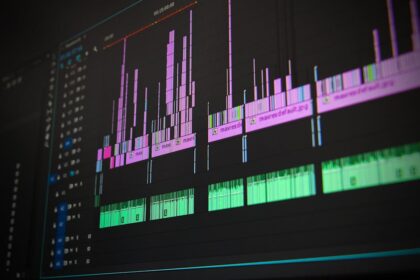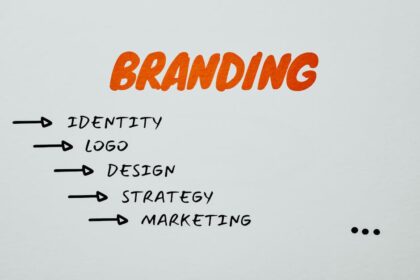The digital landscape is a relentless arena of fleeting attention, where every scroll is an opportunity lost or gained. In this high-stakes environment, video advertisements have emerged as potent tools for brand communication, but their efficacy hinges almost entirely on a critical, often underestimated, factor: the initial three seconds. This minuscule window dictates whether a viewer pauses, engages, and potentially converts, or simply scrolls past, rendering the entire investment in the ad moot. Mastering these foundational seconds is not merely a best practice; it is the bedrock of modern video advertising success.
The Psychology of the Scroll: Why Three Seconds Rule the Roost
Understanding the imperative of the three-second hook begins with a deep dive into human psychology and the prevailing digital consumption habits. In an age saturated with content, attention spans have drastically shortened. Studies indicate that the average human attention span online is often less than that of a goldfish, plummeting from an estimated 12 seconds in 2000 to just 8 seconds by 2012. While these exact figures are debated, the trend is undeniable: information overload breeds impatience and selective filtering. Users are constantly bombarded, leading to a phenomenon known as “scroll fatigue.” Their default mode is to glide through feeds, making split-second decisions about what is worthy of their limited cognitive resources.
The “primacy effect” in psychology underscores the importance of first impressions. The information presented earliest tends to be remembered better and weigh more heavily in overall judgments. For a video ad, this translates directly to the opening frames. The brain rapidly processes visual and auditory cues, forming an instantaneous judgment about relevance, interest, and trustworthiness. If the initial stimuli fail to trigger curiosity or address an immediate need, the ad is dismissed before its core message even has a chance to unfold. This rapid evaluation process is largely subconscious, driven by heuristics and pattern recognition cultivated over countless hours of online browsing.
Furthermore, the very design of social media platforms encourages rapid consumption. Feeds are designed for infinite scrolling, turning content discovery into a continuous stream rather than a deliberate search. This architectural choice conditions users to move quickly, to graze rather than to feast. An ad that doesn’t immediately interrupt this flow, that doesn’t present an undeniable reason to stop, will simply be swallowed by the current. The three-second rule isn’t an arbitrary metric; it’s a data-informed reflection of how users interact with content on mobile devices and across diverse digital platforms. Marketing analytics consistently show a steep drop-off in viewer retention after the first few seconds, highlighting this critical threshold.
Deconstructing the Anatomy of a High-Impact Video Ad Hook
Crafting an effective three-second hook is an art form rooted in strategic principles, blending compelling visuals, captivating audio, and persuasive messaging. Each element must work in concert to achieve the primary goal: stopping the scroll.
1. The Visual Dominance: Stopping Thumbs with Eyes
In a world where many videos are consumed without sound (especially on platforms like Facebook and Instagram feeds), the visual component of the hook is paramount. It must be striking, immediate, and convey intent without auditory assistance.
- Pattern Interrupts: The human brain is wired to detect novelty. A visual hook that deviates from the expected, that presents an unexpected scene, color palette, or action, instantly grabs attention. This could be a dramatic zoom, an abrupt change of scene, an unusual angle, or a jarring (but relevant) visual juxtaposition.
- Dynamic Movement and Pacing: Stagnant visuals are scroll-killers. The first three seconds should feature significant, purposeful movement. This could be a person in action, a product being demonstrated, an object moving across the screen, or rapid, engaging cuts between different scenes. Fast-paced editing with quick transitions keeps the viewer’s eye engaged and communicates urgency.
- Vibrant Colors and High Contrast: Bold, eye-catching colors and high contrast imagery stand out in a cluttered feed. Brands often use their signature colors or strategically employ complementary colors to create visual pop. Avoid muted or bland palettes that blend into the background.
- Intriguing or Relatable Scenarios: Presenting a micro-narrative or a highly relatable situation within the first few seconds can hook viewers emotionally. This might be someone struggling with a common problem, a moment of delight, or a scene that evokes curiosity about its context.
- Close-Ups and Human Faces: Faces are inherently engaging, triggering an innate human response. A close-up of a person expressing emotion, surprise, or direct eye contact can create an immediate personal connection. Similarly, close-ups of a product’s unique feature can highlight its appeal instantly.
- High-Quality Production Value (or Intentional Lo-Fi): While polished visuals often convey professionalism and trust, sometimes a deliberately raw, user-generated content (UGC) style can also be incredibly effective for authenticity. The key is intent and relevance to the brand and audience. Blurred, shaky, or low-resolution footage (unless part of a specific artistic choice) will almost always lead to a skip.
- Text Overlays and Graphics: Concise, bold text overlays can amplify the visual hook, especially in sound-off environments. This text should be large, legible, and deliver a key message or question immediately. Think “Are you tired of…?” or “The Secret to X!” or a shocking statistic. Animated graphics can add another layer of visual interest.
2. The Auditory Allure: The Power of Sound (When It’s On)
While visuals often lead the charge, the audio component, when present, can significantly deepen the engagement and emotional impact of a hook.
- Distinctive Sound Effects: A unique chime, a satisfying click, a surprising pop, or a recognizable brand jingle can create an auditory pattern interrupt. These sounds should be clear, concise, and immediately recognizable.
- Intriguing Music or Beat Drop: Music sets the mood and can instantly evoke emotion. A catchy beat, a suspenseful melody, or an uplifting tune that changes rhythm within the first few seconds can grab attention. The “beat drop” phenomenon in short-form video is a testament to this, where a sudden change in music often signals a shift in content or a reveal.
- Clear, Compelling Voiceover or Dialogue: If a voiceover is used, it must be exceptionally clear, well-paced, and deliver a high-impact statement immediately. Starting with a powerful question, a bold claim, or a surprising fact delivered with conviction can be incredibly effective. Dialogue should be natural and to the point.
- Sound Design for Emotional Resonance: Beyond just music or voice, thoughtful sound design can enhance the visual story. The crunch of a snack, the whir of a machine, or the ambient sounds of a specific environment can immerse the viewer quickly.
- The “Sound-Off” Consideration: While emphasizing audio’s power, always design hooks with the assumption that the video might be watched without sound initially. The visual hook must stand alone. If the audio is critical, ensure captions are immediately present and prominent.
3. The Message Magic: What You Say and How You Say It
Beyond the aesthetics, the core message embedded in the first three seconds is paramount. It’s about communicating value, addressing a pain point, or sparking curiosity with extreme brevity.
- Problem Identification: Immediately articulating a common pain point or frustration that the target audience experiences. “Tired of slow internet?” “Struggling with meal prep?” This instantly creates relevance.
- Benefit Statement: Leading with a compelling, tangible benefit rather than a feature. “Unlock flawless skin in 7 days!” “Save hours on laundry!” This highlights immediate value.
- Curiosity Gap: Posing a question or hinting at a secret/solution without fully revealing it. “You won’t believe what happens next…” “The one thing you’re missing for better sleep.” This compels viewers to stay for the reveal.
- Bold Claim or Statistic: Presenting a surprising fact, a shocking statistic, or an audacious claim that challenges conventional wisdom. “9 out of 10 people make this mistake…” “Increase your sales by 300% overnight!”
- Direct Address: Speaking directly to the viewer with “you” or “your” creates a personal connection. “Are you ready to transform your finances?”
- Urgency or Scarcity: While often used later in ads, a subtle hint of urgency can be part of the hook. “Limited time offer ends soon!”
- Clear Value Proposition: Even in three seconds, implicitly or explicitly communicate what the ad is about and why it matters to the viewer. Avoid generic statements.
Strategic Approaches to Crafting Irresistible Hooks
Different types of hooks cater to various objectives, audiences, and platforms. Employing a diverse range of strategies can maximize impact.
1. The “Pattern Interrupt” Hook:
This strategy is about doing the unexpected. If everyone is starting with a product shot, start with a surprising, unrelated visual that then cleverly transitions into your offering. This could be:
- An abrupt sound effect (e.g., a record scratch) combined with a sudden visual change.
- A reverse video clip.
- An animation that defies physics.
- A visually jarring scene that makes the viewer stop and question what they’re seeing.
- A person suddenly appearing on screen or speaking directly to the camera in an unconventional way.
- Example: An ad for a cleaning product starts with a seemingly pristine home, then a sudden, exaggerated explosion of dirt and grime appears on a single surface, followed by a quick cut to the product.
2. The “Problem-Agitate-Solve (Mini-PAS)” Hook:
Compress the PAS framework into the initial seconds. Immediately present a relatable problem, hint at its frustration, and then offer a glimmer of hope/solution.
- Problem: Show someone struggling or looking frustrated.
- Agitate: Use text overlay like “Tired of this?” or a sound effect indicating struggle.
- Hint at Solve: A quick flash of the product or a confident nod from a spokesperson.
- Example: Video opens with someone fruitlessly wrestling with tangled cables, a frustrated sigh sound effect, and then a quick shot of a sleek, wireless device.
3. The “Benefit-Driven” Hook:
Lead with the most compelling benefit your product or service offers, focusing on the transformation or positive outcome.
- Visual: Show the desired end state (e.g., glowing skin, a perfectly organized home, someone enjoying newfound freedom).
- Text/Voiceover: State the benefit directly. “Wake up with flawless skin.” “Finally, a clean home without the effort.”
- Example: A person is seen effortlessly running, smiling, with the text overlay: “Run Further, Feel Lighter.” This implies the benefit of a running shoe or supplement.
4. The “Question-Based” Hook:
Pose a provocative or highly relevant question that directly addresses the viewer’s likely concerns or aspirations.
- Visual: Someone looking thoughtful, confused, or curious.
- Text/Voiceover: “Are you making this common mistake?” “What if you could do X?” “Is your data truly safe?”
- Example: A video shows a person holding their head in despair, with the overlay “Struggling to grow your business?” or a voiceover asking, “What’s holding you back from achieving your dreams?”
5. The “Curiosity Gap” Hook:
Intrigue the viewer by presenting something unexpected, a partial reveal, or a setup that demands explanation.
- Visual: A mysterious object, an unusual scenario, or something being built/unveiled partially.
- Text/Voiceover: “The secret they don’t want you to know…” “This changed everything.” “You won’t believe what happened next.”
- Example: A video opens with a close-up of an intricate, rapidly moving machine part, with no context, simply a title like “The future of efficiency is here.”
6. The “Bold Claim/Statistic” Hook:
Leverage surprising data or a powerful statement to immediately establish authority or provoke thought.
- Visual: Graphics displaying numbers, a person making a confident statement, or a chart.
- Text/Voiceover: “90% of businesses fail to do this one thing.” “Double your income in 30 days.” “The only X you’ll ever need.”
- Example: A video begins with a striking infographic displaying “75% of your energy is wasted,” followed by a quick shot of an energy-efficient appliance.
7. The “Demonstration/Action” Hook:
Show, don’t just tell. Immediately showcase the product in action, highlighting its key benefit or unique feature.
- Visual: Product being used, quick before-and-after, a problem being solved directly by the product.
- Example: A cleaning product ad starts with a burst of spray instantly dissolving a stain, or a kitchen gadget quickly slicing a vegetable with satisfying precision.
8. The “User-Generated Content (UGC) / Testimonial” Hook:
Leverage social proof and authenticity by starting with a genuine reaction or testimonial.
- Visual: A real person (not an actor) expressing surprise, delight, or demonstrating success.
- Audio/Text: A short, impactful quote like “I can’t believe how easy this is!” or “This saved me so much time!”
- Example: A video starts with a genuine “Wow!” reaction from a person unboxing a product, or a quick clip of someone saying, “My skin has never looked better!”
9. The “Emotional Resonance” Hook:
Tap into universal emotions like humor, joy, frustration, or empathy within the first few seconds.
- Humor: A quick, unexpected comedic moment.
- Joy/Aspiration: Someone achieving a goal or experiencing pure happiness.
- Empathy: Showing a relatable struggle or a moment of connection.
- Example: A funny cat video that transitions into a pet food ad, or a quick montage of family enjoying a product that represents togetherness.
Technical Considerations and Best Practices for Optimal Hook Performance
Beyond the creative concepts, the technical execution and strategic deployment of video ad hooks are crucial for maximizing their effectiveness across diverse digital ecosystems.
1. Platform-Specific Optimization:
Each advertising platform has its nuances regarding audience behavior, content formats, and technical specifications. A hook optimized for TikTok might fail on LinkedIn, and vice versa.
- TikTok & Instagram Reels: Dominated by short-form, vertical video. Hooks need to be hyper-fast, visually dynamic, often trend-driven, and leverage popular audio or challenges. Authenticity and a UGC feel often outperform overly polished production. Immediate gratification and a sense of discovery are key.
- Facebook & Instagram Feed: Often consumed sound-off initially. Visual hooks are paramount. Text overlays are crucial. Square or vertical formats perform well. Hooks should be relatable, problem-solving, or curiosity-inducing.
- YouTube (In-Stream/Pre-Roll): Viewers are often in a more passive consumption mode, waiting for their chosen content. Hooks need to be compelling enough to overcome the “skip ad” button. Strong problem/solution or direct benefit statements work well. High production value is often expected. Many users will tolerate a slightly longer hook if the initial premise is truly captivating.
- LinkedIn: Professional audience, focus on business solutions, career growth, and industry insights. Hooks should be problem-oriented, benefit-driven for professionals, or feature credible testimonials. Less emphasis on entertainment, more on immediate value.
- Snapchat/Pinterest: Highly visual platforms. Snapchat thrives on ephemeral, authentic, often playful content. Pinterest users are often in a discovery or planning mindset, so hooks showing product utility or aspirational outcomes are effective.
2. Mobile-First Design Principles:
The vast majority of video ad consumption happens on mobile devices.
- Vertical Video (9:16 aspect ratio): Essential for full-screen immersion on platforms like TikTok and Reels. Even on Facebook/Instagram, vertical or square often outperforms horizontal.
- Legibility: Text overlays must be large, high-contrast, and easy to read on a small screen. Avoid small fonts or low-contrast colors.
- Fingertip-Friendly CTA (Implied): While the hook itself isn’t a CTA, it’s designed to make the viewer want to tap or learn more. Ensure visuals align with a seamless transition to a clickable experience.
- Clutter-Free Visuals: Mobile screens are small. Avoid overly busy or cluttered visuals in the first three seconds that might confuse or overwhelm the viewer. Focus on a single, clear point of interest.
3. The Power of A/B Testing:
Optimization is not a one-time task. What resonates with an audience today may not tomorrow.
- Test Multiple Hooks: Create several variations of your first three seconds for the same ad campaign.
- Isolate Variables: Test different visuals, different first lines of dialogue, different sound effects, or different text overlays.
- Measure Key Metrics: Pay close attention to video retention rates (especially after 3 seconds), click-through rates (CTR), and conversion rates for each hook variation.
- Iterate and Learn: Use data to understand what resonates best with your specific audience and refine your approach continuously. A/B testing isn’t just about finding a winner; it’s about understanding why certain elements perform better.
4. Advanced Editing Techniques for Impactful Hooks:
The way a video is edited in those initial seconds can dramatically amplify its effectiveness.
- Rapid Cuts: Quick, snappy edits keep the viewer engaged and create a sense of dynamism. Avoid slow fades or lingering shots.
- Jump Cuts: Deliberate, abrupt cuts that create a sense of urgency or transition between scenes quickly.
- Zoom Ins/Outs: Rapid zooms can draw attention to a specific detail or create a sense of surprise.
- Motion Graphics: Animated text, logos, or visual elements can add a polished, dynamic layer to the hook.
- Sound Design and Mixing: Ensure audio levels are consistent and impactful. A sudden increase in volume (within reason) or a unique sound can grab attention. Even in sound-off environments, good sound mixing makes the ad more professional for those who turn it on.
- Color Grading: Strategic use of color can set the mood and make visuals pop. High saturation, specific color palettes, or dramatic contrast can make an image more arresting.
5. Leveraging Subtlety vs. Overtness in Branding:
While the goal is to grab attention, avoid immediately blasting the viewer with a giant logo that offers no value.
- Subtle Brand Integration: A quick flash of a logo, a brand color scheme, or a product subtly present in the background can build brand recognition without being intrusive.
- Brand Voice: The tone, style, and messaging in the hook should be consistent with your overall brand voice, even if the logo isn’t front and center.
- Product as Hook: If the product itself is visually interesting or immediately solves a problem, it can be the star of the hook.
6. Accessibility Considerations:
Ensuring your ad is accessible to all viewers improves reach and inclusivity.
- Captions/Subtitles: Absolutely essential for sound-off viewing. Ensure they are accurate, well-timed, and legible.
- Descriptive Visuals: If the audio is critical to the hook, ensure the visuals convey enough meaning for those with hearing impairments.
- Color Contrast: Maintain sufficient contrast for text and important visual elements to assist viewers with visual impairments.
Common Pitfalls and How to Avoid Them in Your Video Ad Hooks
Even with the best intentions, several common mistakes can derail an otherwise well-conceived video ad hook. Recognizing and sidestepping these traps is crucial.
1. The “Slow Burn” Intro:
- Mistake: Starting with a lengthy brand logo animation, a generic stock footage establishing shot, or a slow, abstract artistic opening that doesn’t immediately convey value or intrigue.
- Avoidance: Get straight to the point. The first frame should be engaging. If you need a logo, make it quick and subtle, or integrate it meaningfully into the scene rather than as a separate bumper. Assume viewers will scroll if not captivated within 1-2 seconds.
2. Overly Generic or Stock Footage:
- Mistake: Using bland, impersonal stock footage that feels unoriginal and lacks connection to the brand or problem. Viewers can spot generic stock a mile away, and it instantly signals a lack of effort or authenticity.
- Avoidance: Invest in original, high-quality footage. If using stock, select clips that are highly unique, visually striking, or can be creatively integrated to feel bespoke. Look for “pattern interrupt” within stock libraries, or use stock as a background element to your unique foreground action.
3. Unclear Messaging or Overwhelm:
- Mistake: Trying to convey too many ideas, features, or benefits in the first three seconds, resulting in a cluttered, confusing, or overwhelming visual and auditory experience.
- Avoidance: Focus on one primary hook message. What is the single most compelling visual, question, or problem you can present? Simplify the visuals, use concise text, and avoid multiple competing elements. Clarity trumps complexity in the first three seconds.
4. Ignoring Sound-Off Viewing:
- Mistake: Relying solely on audio to deliver the hook, rendering the ad ineffective for the significant portion of users who watch videos without sound.
- Avoidance: Always design your hook visually first. Ensure the visuals, text overlays, and on-screen graphics can tell the story or spark curiosity even with no audio. Then, layer audio as an enhancement. Always include clear, legible captions.
5. Repetitive or Predictable Hooks:
- Mistake: Using the same type of hook for every ad, leading to viewer fatigue and predictable content. Audiences become desensitized to patterns.
- Avoidance: Diversify your hook strategies. A/B test different types (problem-solution, curiosity gap, demonstration, humor, etc.) for different campaigns or even within the same campaign cycle. Keep an eye on evolving trends in short-form content.
6. Poor Production Quality:
- Mistake: Low-resolution video, choppy editing, poor lighting, unprofessional audio, or shaky camera work that undermines credibility and viewer trust.
- Avoidance: While authenticity is valued, “low quality” is not. Invest in good equipment (even a modern smartphone can work with good lighting and stabilization), learn basic editing, and ensure crisp audio. High-quality production signals professionalism and competence.
7. Too Much Text or Unreadable Fonts:
- Mistake: Cramming too much text into the first few seconds or using small, decorative, or low-contrast fonts that are difficult to read quickly on a mobile screen.
- Avoidance: Be ruthless with text. Every word must count. Use bold, sans-serif fonts in a readable size with high contrast against the background. Animate text subtly if it enhances readability and impact.
8. Disconnect Between Hook and Ad Body:
- Mistake: Creating an incredibly engaging hook that is completely irrelevant or misleading to the rest of the ad’s content, leading to viewer frustration and a high bounce rate. This is clickbait in video form.
- Avoidance: The hook must be a promise that the rest of the ad delivers on. It should set the stage for the core message, problem, or solution. Ensure a seamless and logical transition from the hook to the main content.
The Future of Hooks: Evolving with Technology and Attention
The landscape of digital advertising is in perpetual motion, driven by technological advancements and shifting user behaviors. The imperative of the three-second hook will only intensify, demanding greater sophistication and creativity from marketers.
1. Hyper-Personalization Through AI:
- Trend: Artificial intelligence and machine learning are enabling unprecedented levels of audience segmentation and dynamic content creation. In the future, AI might generate multiple, highly personalized hooks tailored to individual user profiles, browsing history, and real-time context.
- Impact: Imagine an ad that recognizes your location, weather, and recent search queries, delivering a hook that specifically addresses your immediate needs or interests with uncanny precision. This could manifest as subtle variations in visuals, text overlays, or even voiceover intonation.
2. Interactive Elements within Hooks:
- Trend: Beyond simple clicks, expect to see more interactive elements embedded directly into the first few seconds of video ads. This could involve mini-polls, tap-to-reveal features, or even gamified micro-interactions.
- Impact: This transforms passive viewing into active engagement from the very first moment, dramatically increasing time spent and information processed. It also provides valuable immediate feedback to advertisers.
3. Augmented Reality (AR) & Immersive Hooks:
- Trend: As AR technology becomes more mainstream, especially through social media filters and camera effects, expect to see AR-powered hooks. These could be filters that apply to the viewer’s environment, or product demonstrations that virtually place an item in the viewer’s space.
- Impact: AR creates a highly immersive and personal experience, making the ad feel less like an interruption and more like an engaging, playful interaction. Imagine “trying on” a product virtually within the first few seconds of an ad.
4. Short-Form Video Dominance and Micro-Hooks:
- Trend: The success of platforms like TikTok has solidified the dominance of ultra-short video formats. This will likely lead to an even more condensed “hook” philosophy, where the first second, or even half-second, becomes critical.
- Impact: This demands even faster pacing, more extreme pattern interrupts, and highly distilled messaging. The entire ad might become a series of micro-hooks, each fighting for fractional attention.
5. AI-Powered Creative Optimization:
- Trend: AI tools are already assisting in generating ad copy and identifying optimal creative elements. This will extend to video, with AI analyzing performance data from thousands of hooks to suggest optimal visual cues, pacing, and emotional triggers for specific demographics.
- Impact: This moves beyond simple A/B testing to predictive analytics, allowing marketers to create hooks with a higher probability of success before launching campaigns, saving time and resources.
6. Emphasis on Authentic Storytelling (Quickly):
- Trend: As consumers grow weary of overly polished, inauthentic advertising, there’s a growing appreciation for genuine, relatable stories. The challenge is to tell a compelling micro-story within the hook.
- Impact: This might mean more unscripted, raw footage as hooks, or highly condensed narrative arcs that immediately introduce a character, conflict, or transformation that feels real and immediate.
Mastering the initial three seconds of a video ad is no longer a luxury but a fundamental necessity for digital marketing success. It requires a profound understanding of human psychology, meticulous attention to visual and auditory detail, and a commitment to data-driven optimization. By focusing intently on creating irresistible hooks, brands can pierce through the noise, capture fleeting attention, and lay the groundwork for meaningful engagement and, ultimately, conversion in the hyper-competitive digital realm.









